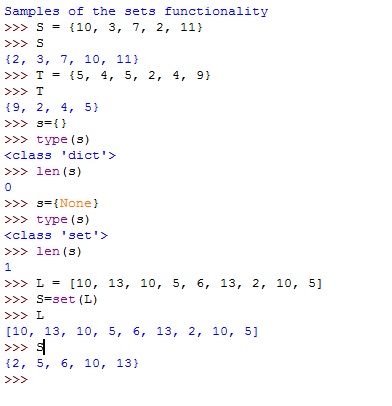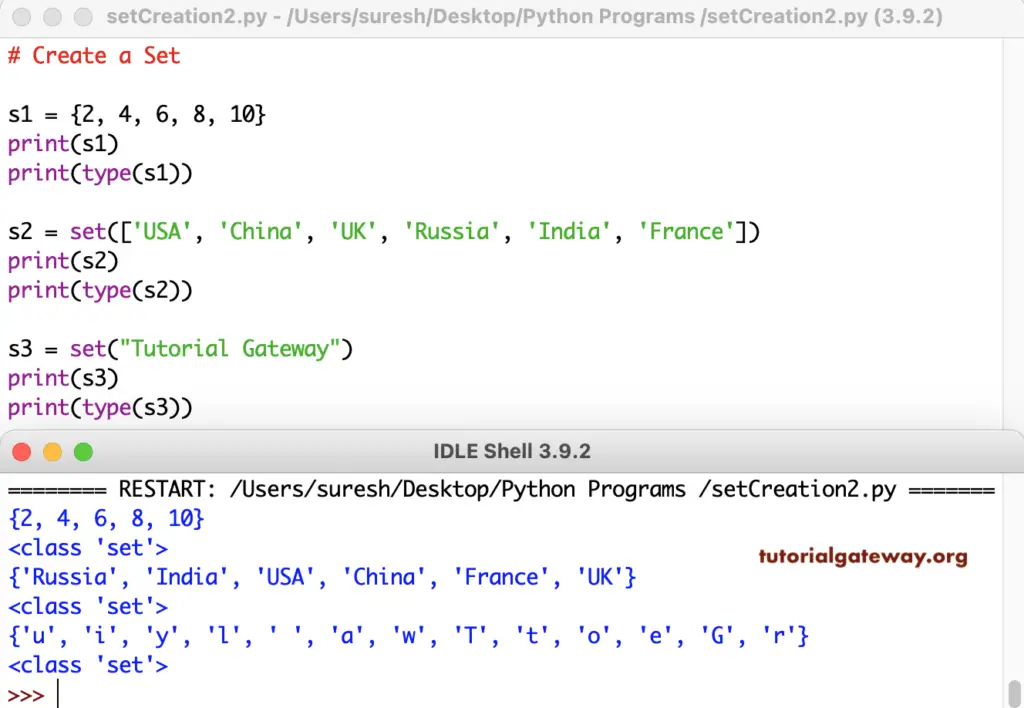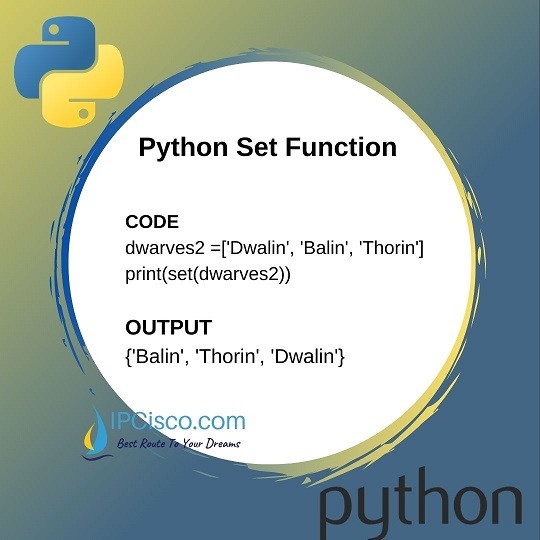

SetA.issubset(setB) returns True if setA is subset of setB, False if not. ‘&=’ can be used in place of the intersection_update method. Similarly, setA.intersection_update(setB) removes elements from setA which are not present in the intersection set of setA and setB.

#Python set update#
> # update setA by removing elements present in setB from setA SetA.difference_update(setB) removes all elements of y from setA ‘-=’ can be used in place of the difference_update method. > # returns true as setA and setC has no elements in common Returns true if intersection of sets is empty otherwise false > # returns false as both have common elements SetB is a proper subset of setA to setB - setA is empty set.

The major advantage of using a set, as opposed to a list, is that it has a highly optimized method for checking whether a specific. Python doesn’t depend on the underlying operating system’s notion of text files all the processing is done by Python itself, and is therefore platform-independent. The order of elements in a set is undefined though it may consist of various elements. > # print a new set with values present in setA but not in setB In Python, a Set is an unordered collection of data types that is iterable, mutable and has no duplicate elements. Returns the difference of two sets “-” operator can also be used to find the set difference. The items in a set list are unordered, so it will appear in random order. > # above operation and using method name intersection shows same results The set () function creates a set object.
#Python set how to#
You'll also learn how to access, add, and remove items in a set in Python. In this article, you'll learn how to create sets. The value of items in a set cannot be modified/changed once the set has been created. > # print a new set with the values present in both setA and setB The order of the set changes every time it is used. Returns element present in both sets this can also be achieved using the ampersand operator (&). If you call any imported functions, you get a lot of line numbers without code.
#Python set code#
The problem is that jcomeauictxs traceit function only works correctly if all code to be traced is within the file that is called with python file.py (lets call it the host file). > # pop raises a KeyError exception if the set is empty I liked jcomeauictxs answer very much, but it has a small flaw, which is why I extended on it a bit. If later, you want to modify the setting and getting, you. builtins): value something obj.attribute value value obj.attribute del obj.attribute. In Python, creating sets is one of the ways in which we can group items together. The 'Pythonic' way is not to use 'getters' and 'setters', but to use plain attributes, like the question demonstrates, and del for deleting (but the names are changed to protect the innocent. The principal built-in types are numerics, sequences, mappings, classes, instances and exceptions. Python has its own methods of creating a collection of objects. Removes an arbitrary set element > # popping an element from setA The following sections describe the standard types that are built into the interpreter. set () takes a single optional parameter: iterable (optional) - a sequence ( string, tuple, etc.) or collection (set, dictionary, etc. Will remove all elements from set > # clear the set shallow_copy_of_setA created before using copy() operation

In this article, we will see a list of all the functions provided by Python to deal with Sets. Python provides various functions to work with Set. Using assignment here instead of copy() will create a pointer to the already existing set. A Set in Python is a collection of unique elements which are unordered and mutable. > # since a string is an iterable, this will succeed. Sets can be created by calling the built-in set() function with a sequence or another iterable object. In this tutorial you will learn how to create a set and and the common paradigms for a set in Python. Sets are commonly used for membership testing, removing duplicates entries, and also for operations such as intersection, union, and set difference. The elements appear in an arbitrary order when sets are iterated. A set is an unordered collection data type with no duplicate elements. Python Set provides different built-in methods to perform mathematical set operations like union, intersection, subtraction, and symmetric difference.


 0 kommentar(er)
0 kommentar(er)
